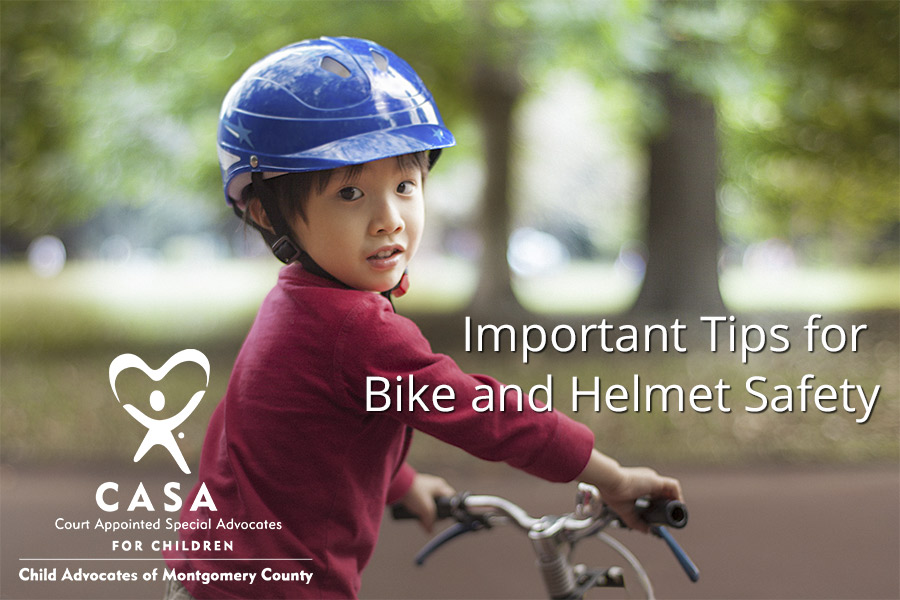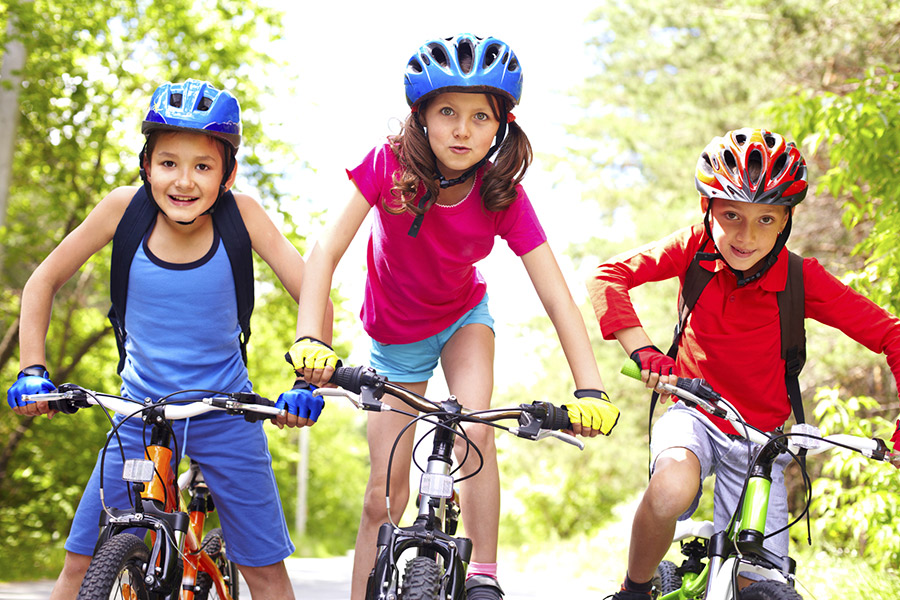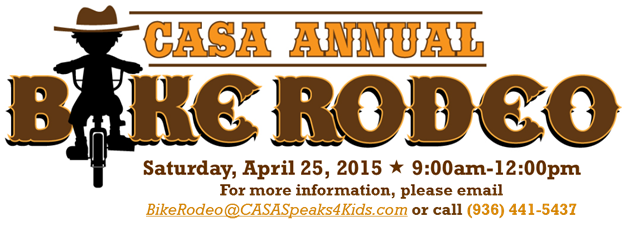Important Tips for Bike and Helmet Safety

Statistics report that more children ages 5 to 14 are injured and go to emergency rooms when they are biking than with any other outside activity or sport. You want your child to be as safe as he or she can be when they take to the road. At the heart of CASA is our passion for helping children who need us. We’ve written this article to help with biking safety for children.
First, let’s talk about the bike itself. The bike must fit the child. Never choose one that he or she will “grow into“. The child, when sitting on the seat, should be able to touch the ground with his or her feet. Once you’ve purchased the bike, it is a good idea to regularly:
- Check the brakes to ensure they are working properly.
- Check and oil the chain.
- Check the tire pressure.
- Check that the seat, handlebars, and wheels fit tightly.
First and foremost in bike safety is the helmet. The helmet has been proven to reduce the risk of severe brain injuries by 88 percent. Every parent or guardian should ensure their child wears one. When buying a helmet, check to see if it has a sticker to display that it meets the standards of the Consumer Product Safety Commission (CPSC). Sometimes it is difficult to get the child to want to wear the helmet, but today they come in many attractive colors and festive designs.
A hat should never be worn beneath the helmet. Needless to say, your child’s helmet should be a proper fit. If it doesn’t fit, it cannot do its job—protecting your child. Every time your child mounts the bike, be certain he or she is wearing a helmet. Helmets save lives.

Another important safety rule is wearing appropriate clothing. Riding barefoot is definitely a NO-NO. Tennis shoes or sneakers, with laces securely tied, are the safest shoes. They let the rider better grip the pedals. However, you should always check that nothing about your child’s clothing can get tangled in the chain. Also, bright clothing and reflectors on the bike stand out to motorists.
A child is safer if he or she knows the Rules of the Road and rides during daytime hours. These Rules help prevent accidents and injuries:
- Stop and check for traffic in both directions.
- Ride with the traffic flow.
- Follow traffic rules.
- Use bike lanes when possible.
- Keep watch for hazards—broken glass, potholes, and dogs.
- Know and use biking hand signals.
Remember you can lead by example. When driving or riding your own bike, obey traffic rules and show courtesy when on the road.
We hope these pointers will help you guide your child to be safe and have fun! Fun is the essence of biking!
We are glad you joined us today. If it is your first visit, we are:
Volunteers appointed by judges to watch over and advocate for abused and neglected children. One of our goals is to make sure these kids don’t get lost in the overburdened legal and social service system or remain in the wrong foster home.

CASA is hosting the 2nd Annual Bike Rodeo in April to teach bike safety to children in foster care. We have also raised funds in order to provide a new bike and helmet to the children attending the event…the kids we represent, and who represent a big part in our lives.
